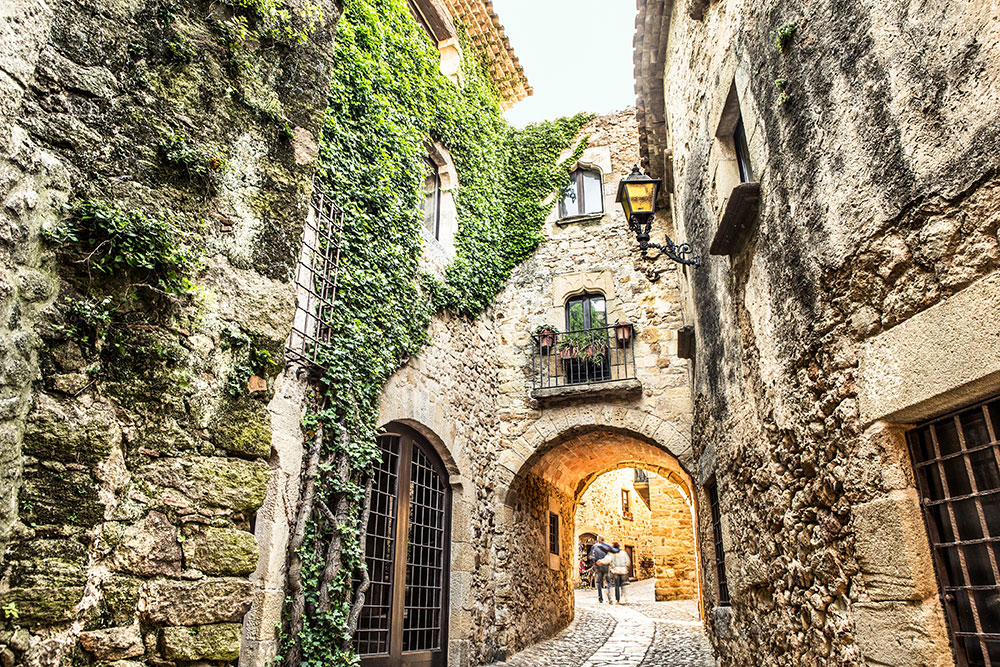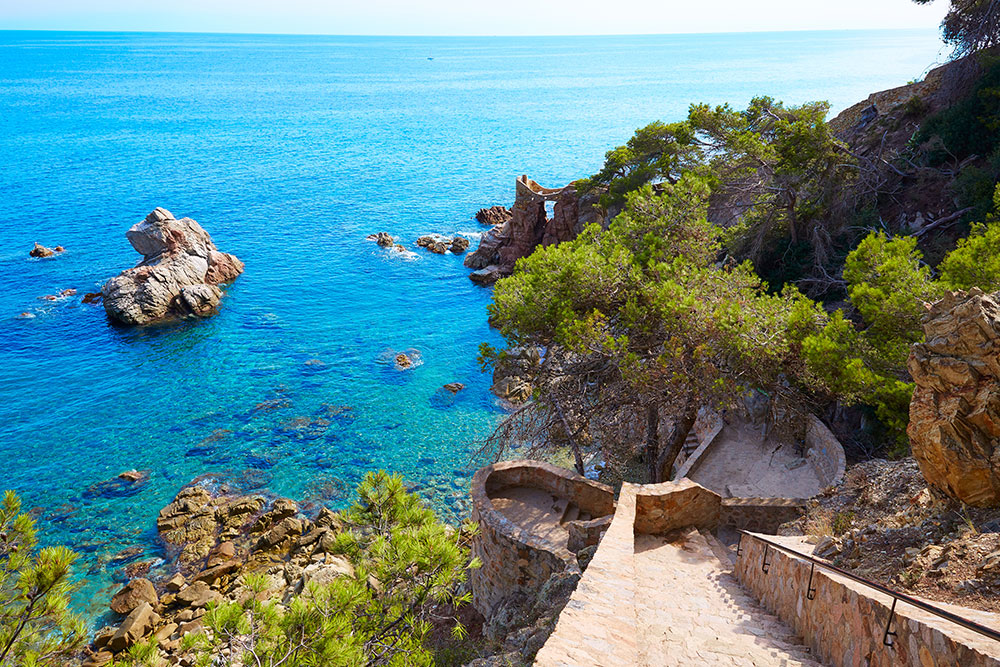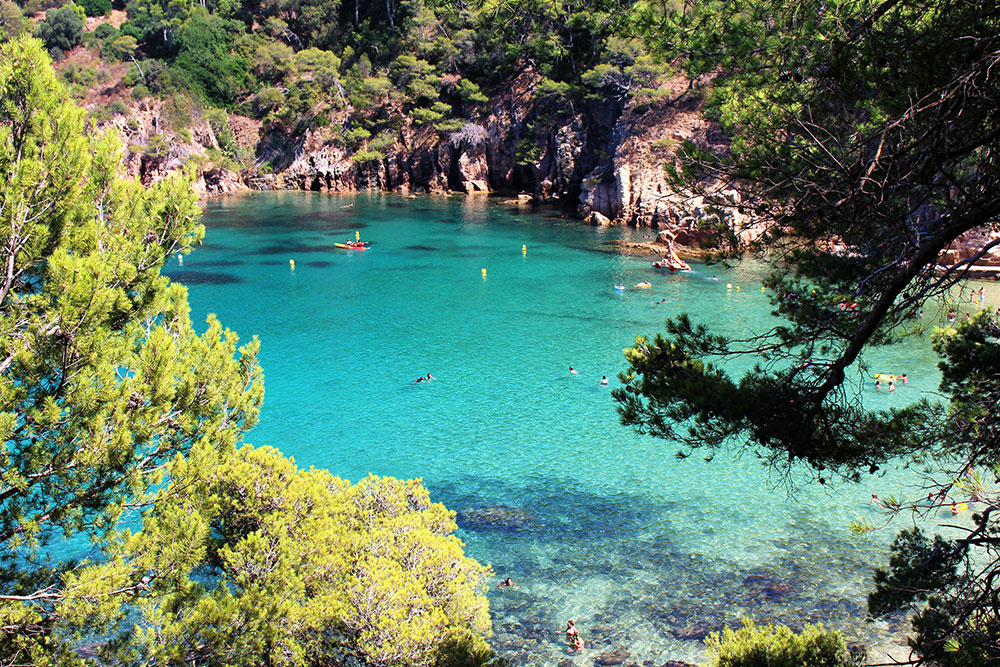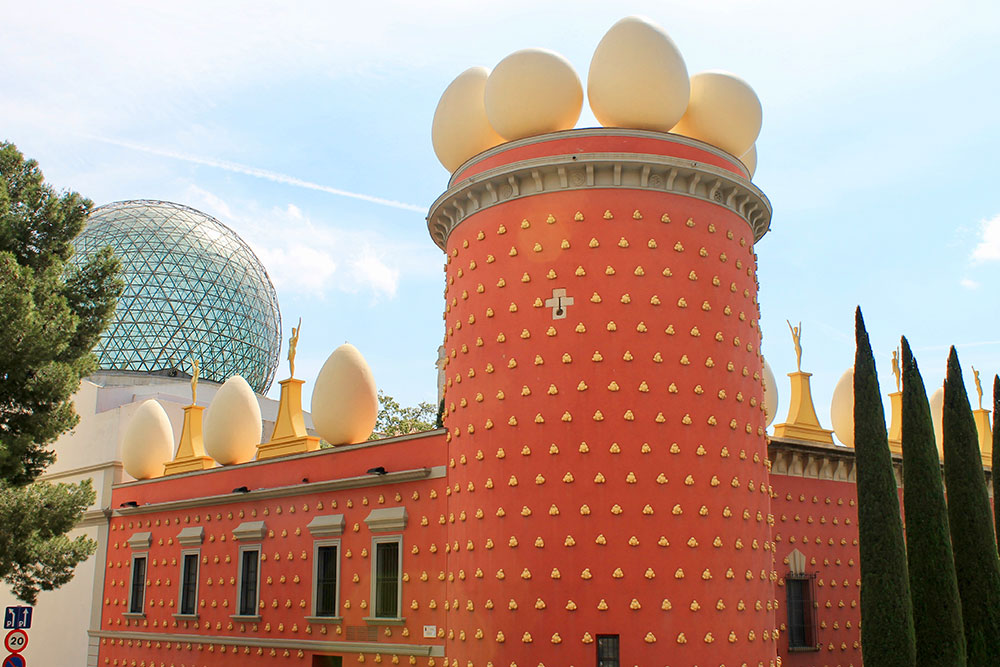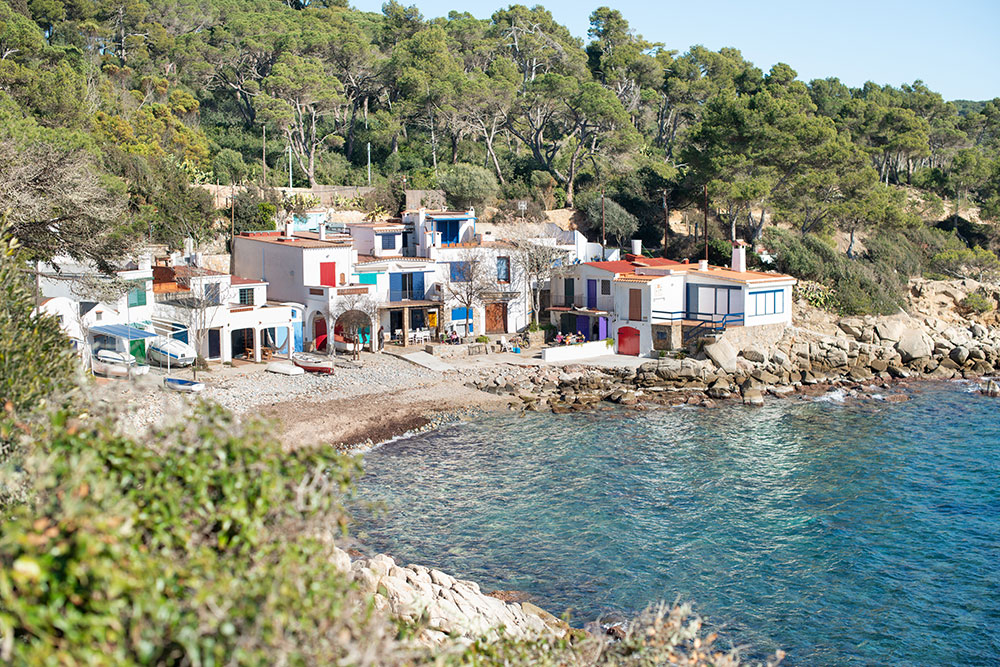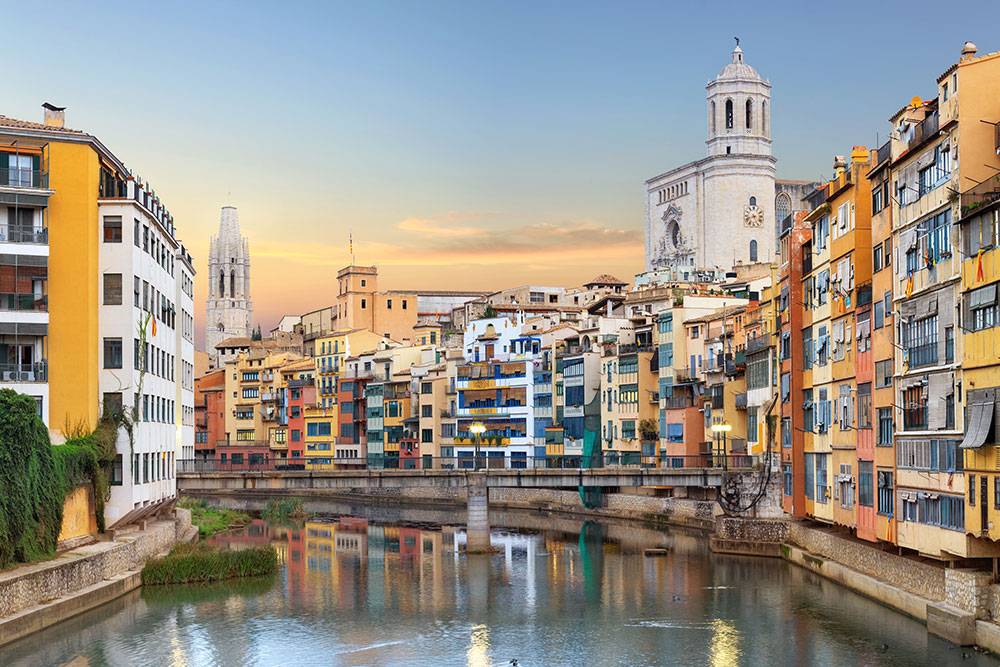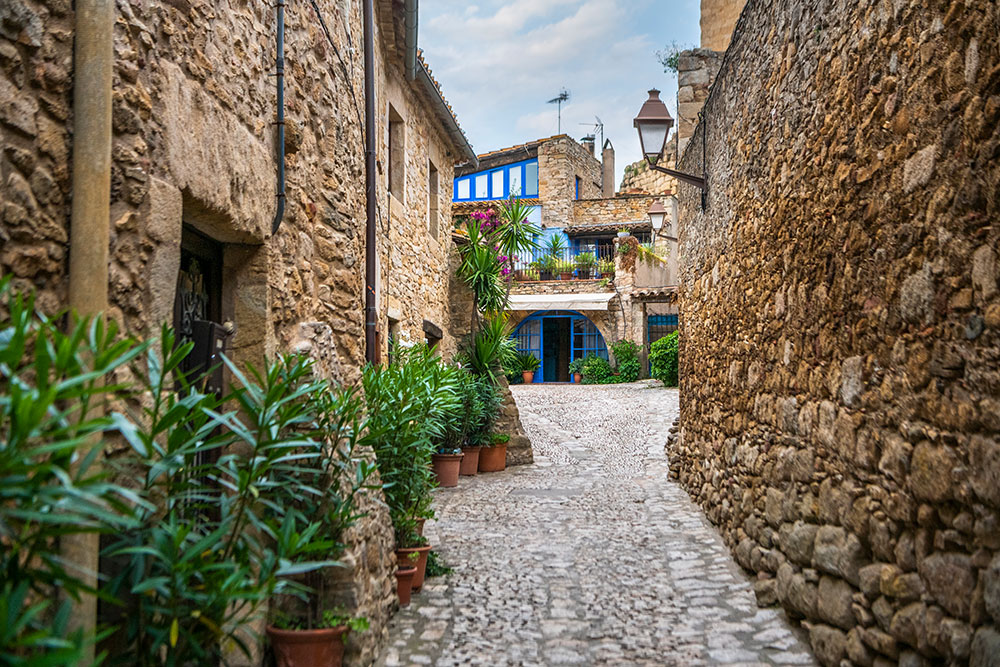The medieval Empordanet
PALS
With its admirable Gothic shapes and Conservation , the medieval town of Pals has become one of the Costa Brava’s attractions and snooping parts for all those who admire the ancient walled towns.
Pals is a good example to deeply know the culture and medieval tracks left on the Mediterranean coast. The first documents of the municipality dates from the eleventh century, when its castle was built.
The walled town suffered several military clashes that caused the loss of most of its assets, and that meant the only conservation of its defensive structure. It is a circular Romanesque tower built between the XI and XIII century. Its 15 meters are based on a natural rock platform, where we also find visigoth’s tombs. During the fifteenth century it was used as the town’s bell for what is known as the Tower of Hours.
The old Pals history rises on a Hill Surrounded plans, which originally was a marshy area. One of the most representative exponents of the city is the Tower of Hours, a magnificent example of a Romanesque circular tower, and the church of Sant Pere, with a curious succession of styles ranging from the Romanesque to the eighteenth century. The highlight of this rise is Pedró viewpoint, from where you can see Les Medes Islands, the Montgrí massif, the Canigó and the Albera range. In addition to the walls and the medieval streets of its alleys, in Pals you need to look for the detailed gothic windows, arches, wells, the doors thresholds and a wide range of interesting corners.
At present, the site of the castle is occupied by the Pi i Figueras family, promoters of the restoration of the Gothic enclosure of Pals. In modern invoice, this house maintains the same architectural features as the rest of the city. Cobbled streets interrupted by arches, facades with lancet windows and stone balconies are some of Pals distinctives. The wall is another place that transports the traveler to the Middle Age. Four square towers remain standing still even dating back to the twelfth century.
It is certainly one of the most attractive destinations to visit if we talk about this kind of Historic Conservation. We recommend the visit.
COSTA BRAVA
COASTAL ROUTES
The Caminos de Ronda is one of the great attractions of the walkers and tourists who visit the Costa Brava. It is undoubtedly a practical and active way of getting to know the entire coast of northern Catalonia.
From Can Poch we propose 3 routes, that by proximity to the accommodation and by indisputable beauty will be a good way to disconnect and enjoy the maximum of your stay.
Route from St. Feliu de Guíxols to Palamós
Leaving from the town of Sant Feliu de Guíxols and bordering the coast, we go through Molí cove, Maset cove and Sant Pol beach. Next we find S’Agaró , which was converted into a promenade planned and designed by the architect Rafel Masó in 1916. The route continues towards the beach of Sa Conca and then, surrounding the mouth of the river Ridaura, we arrive at the town of Playa de Aro. We cross this town along the promenade and go towards Sant Antoni de Calonge. The next stretch is spectacular as the Coastal Route becomes a narrow path that winds between cliffs, crystalline water coves and thick sand beaches. The stretch from Calonge to Palamós runs along a pleasant promenade along the beach.
The total distance is 17.4 km.
Route from Palamós to Llafranc
Starting from Palamós and after crossing Margarita Creek we climb to the top of cap Gros. The views from this point are excellent. once we’ve passed cap Gros, we arrive to the Fosca beach, where the ruins of the castle of Sant Esteve are. From this point, it begins the most wild part of the Costal Route. We pass through s’Alguer, a small fishermen town, a traditional Mediterranean architecture; the beach of Castell, one of the only virgin beaches of the Costa Brava; creek Canyers; Corve’s cove; Estreta creek; cap of Planes and Crit creek. Then we go up to Cap Roig, once crossed Cap Roig we get to the Golfet beach, and without noticing it we’ll arrive to Calella de Palafrugell. From here we continue to Llafranc.
In total, the distance covered is 13.1km.
Route from Llafranc to Begur
The walk begins in Llafranc and after a steep rise, we arrive at the San Sebastián mountain, where the most powerful lighthouse of the peninsula is, a hermitage, a watchtower of medieval origin and the remains of an Iberian village. From this point, the cliff’s foot, known as the Romaboira jump, the views of the coast are breathtaking. We go down a path towards Cala Pedrosa and then we surround the cliffs in Tamariu’s direction. From this town we will go through narrow paths, which pass through the forest, arriving to the Aiguablava’s beach, port of ”ses Orats” and ”Fornells”. Finally, after a strong and steady climb, we will reach the town of Begur.
We warned, this stretch is the hardest, and requires some physical preparation. In total, we will have done 12.5 km, but with a difference of 655m feet.
You will find all the information in: www.camideronda.com
GOLF
GOLF COURSES
The Empordà is an ideal area for golf lovers. There are many passionates of this sport that year after year visit Pals and its surroundings to enjoy a good climate and good fields. Here are several examples:
Golf de Pals
A less than 5 minutes drive from the Masía Can Poch we find the Golf de Pals. Opened in 1966 and located in the middle of the Arenals de Mar estate, on a dune covered by an immense pine forest planted seventy years ago, Golf Platja de Pals is the oldest course on the Costa Brava.
It is a Par 73 and has 18 holes. It is considered one of the best golf courses in Spain, thanks to its careful design and construction, and has also hosted numerous international competitions.
Empordà Golf
Located in Gualta, 10 minutes from Can Poch, we can enjoy a gigantic field. Empordà Golf has two 18-hole courses each. A paradise for golfers, who can combine all holes in 6 courses.
It has hosted several PGA events for over 10 years, and is considered one of the most prestigious courses in the area.
Par3 pitch&putt Gualta
In the same population we find a Pitch & Putt category. For those who prefer the “little Golf’s brother”, here you can enjoy a course with spectacular lakes, bunkers, wide stoneware and long holes. A pleasure, no doubt, for beginners as well as a challenge for players of all levels of this sport.
It has a wide practice zone that allows practicing, training, both short and long play.
GIRONA
INTERESTING POINTS
Begur and its beaches
The coast of this small Catalan town has a beauty hard to match, in which the cliffs, pines and its hidden crystalline water beaches and coves are a paradigm sights of the Costa Brava. Begur counts with 8 marine areas. We recommend you two of the best beaches:
Sa tuna is a cove which is about 10 minutes away from the city center by car, a characteristic that makes it special and shortly frequented . Offers a nice swimm in a clean and transparent water, and calm walks through the Coastal Route.
Aiguablava is also another example of crystalline water beach, but in this case, its low depth and its fine sand are some of its natural charms.
On the other hand, Begur’s urban core is not less breathtaking. Its castle and its historic old part makes the town look alive. In addition, the colonial style of its streets makes it one of the most picturesque areas of the Costa Brava.
Medieval Towns
The area of Empordanet (interior Costa Brava) also stands out for its medieval past. Peratallada is a Historic-Artistic declared town for its urban core as one of the most important medieval architecture and best conserved in Catalonia.
Madremanya is located on a hill top. Chaired by a large parish church fortified urban structure preserved medieval origins and a great part of the houses that took part of the village in the XVI, XVII and XVIII years.
Monells is an ancient castle, which has preserved the walls. The charm of the village resides in its medieval past when nobles and knights stayed.
Lighthouse of St. Sebastià
This lighthouse is one of the most powerful in Spain and it’s located in a tiny cape surrounded by rugged cliffs. Climbing a road with several corners from the beautiful beach of Llafranc, in Palafrugell, we find one of the beauties of the Catalan coast.
From its summit we can enjoy enviable views, where we can contemplate the beaches of the town as well as the prominent silhouette of the coast.
Girona and the old town
Being one of the provincial capitals of Catalonia, it is a relatively small and welcoming city. Its territory is crossed by four rivers, factor that divided it into several parts during the average age.
It has an artistic and historical heritage of great importance. Its Cathedral is famous for belonging to three different architectural styles: Romanesque, Gothic and Baroque. Its cloister is Romanesque, its gothic nave and its baroque details. It has also been part of cinematographic locations, since its old part has been part of Game of Thrones’s sixth season, a successful serie.
Another city’s attraction is its old town (called Barri Vell). It is the heart of the ancient Roman Girona’s city, and contains the most important artistic heritage of the city. Basilicas, cathedrals and slender churches make up its cobbled streets. If we walk through them we will find the Arab baths, the Jewry (or Call Jueu) or the bridges over the river Oñar, among other attractions.
DALÍ
THE DALINIAN TRIANGLE
The Dalinian Triangle is the geometric figure that would appear, on a Catalonia’s map, if we drew a line between the municipalities of Púbol, Portlligat and Figueres. These three locations explain the trajectory of an artist of international projection but totally linked to its territory. This space, concentrated in a 40 km² territory, contains the elements that builds up the Dalinian universe: its museums, landscapes, lights, architecture, orography, customs, legends, gastronomy… essential to understand the work and Salvador Dalí’s life.
A tangible and mythical concept, the Dalinian Triangle allows us to explore Dalí’s universe and to be a gateway to a multiple universe of sensations and subjective experiences for visitors.
For all those who want to discover the land of the genius Ampurdanés, we invite you to visit his museum in Figueres, his house in Portlligat and his castle in Púbol.
You will find all the information here.
“In this privileged place the real and the sublime almost touch each other.My mystic paradise begins in the plains of Ampurdán, surrounded by the hills of Les Alberes and finds its fullness in the bay of Cadaqués.This country is my permanent inspiration”.

